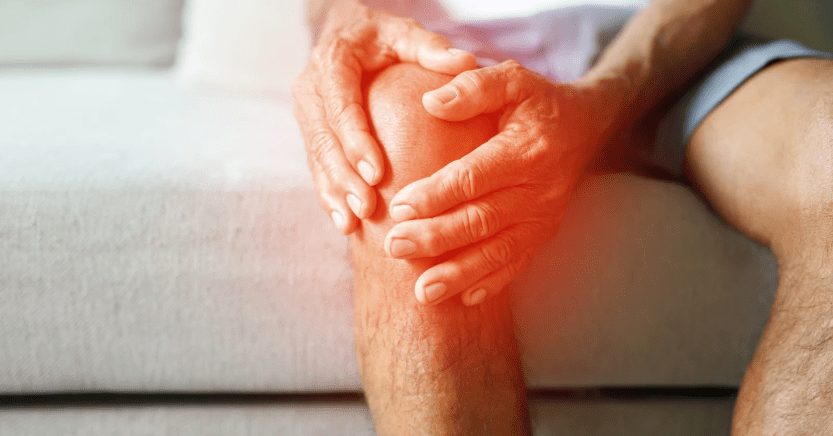Sciatic knee pain without a physical cause may be caused by a lower back issue. Lower spine nerves power knee muscles. Sciatica, which can cause knee pain and weakness, is caused by nerve irritation or compression at their spinal origin. What’s Sciatica? Sciatica causes weakness, tingling, numbness, and shooting pain in the legs, lower back,
Sciatic knee pain without a physical cause may be caused by a lower back issue. Lower spine nerves power knee muscles. Sciatica, which can cause knee pain and weakness, is caused by nerve irritation or compression at their spinal origin.
What’s Sciatica?
Sciatica causes weakness, tingling, numbness, and shooting pain in the legs, lower back, and buttocks. Bilateral sciatica is rare. Inflammation and compression of the sciatic nerve cause sciatica. Herniated discs, osteoarthritis, injuries, and spinal stenosis can cause this. The increased spinal pressure during pregnancy can cause sciatica. Accurate diagnosis is necessary to choose the best sciatica treatment. Harley Street Specialist Hospital’s specialists can diagnose sciatica and help you choose a treatment.
Causes of Sciatic Knee Pain
Sciatica may cause knee pain. Common sciatica knee symptoms include:
- A warm, sharp, or dull knee pain in the front, side, or back
- Unable to bear knee weight
- Knee buckling
- Weakness when straightening the knee
Sciatica symptoms may include knee, buttock, thigh, calf, and foot pain. Sciatica knee pain usually affects one leg at a time. Lower back conditions often cause sciatica. These conditions may affect your spinal discs, nerve roots, joints, or muscles.
L4 Radiculopathy
Your knee symptoms may be caused by L4 spinal nerve root compression if you have sciatica. Lower back spinal stenosis and herniated discs can compress this nerve root. L4 nerve root pain can also affect your thigh and calf.
Hamstring Tightness
Tight hamstrings, located at the back of your thigh, can also cause sciatica-related knee pain. When your hamstrings are tight, your lower back loses stability, its curvature changes, and your spinal joints become stressed. These changes may cause lower back pain and stiffness that radiates to your knees and legs. Sciatica-related knee pain is usually treated by your pain relief centers in Plano. Sciatica is treated with self-care and medication. Pain medications, guided physical therapy and exercise, and epidural steroid injections are common treatments.

Tips for Knee Sciatica Relief
Try these immediately to improve sciatica knee pain.
Regularly Movements
Sitting for long periods can worsen sciatica. Prolonged sitting exacerbates sciatica, and individuals engaged in desk work frequently experience increased discomfort upon standing. Try to take short breaks as often as possible, even if it’s just walking to get water. This position change may reduce sciatic nerve pressure and knee pain.
Light Exercise
Sciatica benefits from swimming, stretching, and walking. Choose your preferred motion. A movement that reduces pain should be done more often.
Ice and Heat Therapy
Heat, ice, or painkillers speed recovery. Pain makes us move unnaturally or avoid movement. By relieving sciatica pain immediately, you can move more normally and speed up recovery.
What are Knee Sciatica Treatments?
Medical treatment for sciatica-related knee pain will focus on the underlying condition. Different clinics diagnose and treat sciatica-related knee pain. Some services we offer:
Physiotherapy
Skilled physiotherapists can diagnose and treat sciatica-related knee pain. Sciatic knee pain specialists are trained in exercise therapy, acupuncture, massage, manual therapy, and other treatments. If your knee pain isn’t sciatica, our physiotherapists can diagnose and treat it. Physiotherapy can help with knee arthritis, meniscus tears, muscle and ligament injuries, and other knee conditions.
Pain Management
Our pain management specialists can assess and treat you the same day. We offer steroid injections and other back pain injections that can relieve sciatica knee pain.
Should I Rest Or Exercise With Sciatica Knee Pain?
Sciatica flare-ups may require a brief rest and limited movement. Sciatica can be so severe that you can’t walk, and you shouldn’t push through pain. You should move gently again as soon as possible. Long periods of immobility worsen sciatica and knee pain. Sciatica pain is better relieved by exercise than bed rest. See a physiotherapist if you’re unsure which movements are best. Physiotherapists recommend sciatica exercises to reduce pain and improve mobility.
If sciatica causes your knee pain, it will only last as long as it does. How long sciatica lasts depends on whether it’s acute or chronic. Acute sciatic episodes usually last a few weeks and may occur several times a year. Chronic sciatica is a lifelong condition that requires specialized treatment.
Summary
The sciatic nerve connects the lower back to the knee. Pressure, injury, or irritation of the sciatic nerve induces sciatica knee pain. The sciatic nerve, lower legs, feet, and knees can hurt. Lifestyle changes and home treatment usually cure sciatica and knee pain. Sciatica pain can be severe, but medical treatment is available. Consulting a pain doctor in plano or a healthcare professional about the best treatments. If the pain persists, worsens, or causes other symptoms, seek medical attention.




















Leave a Comment
Your email address will not be published. Required fields are marked with *